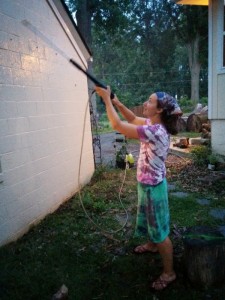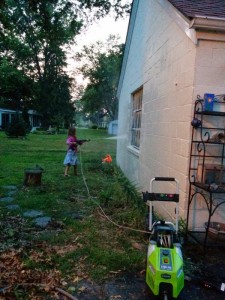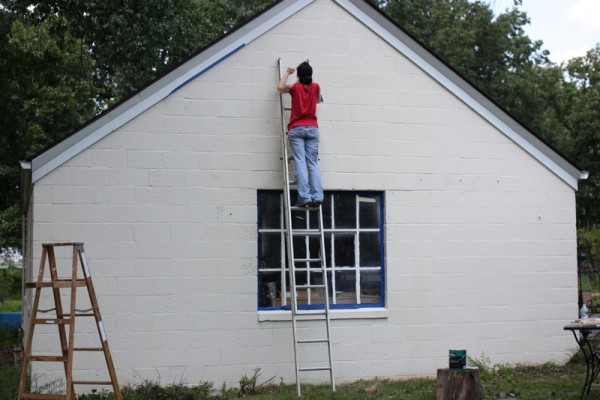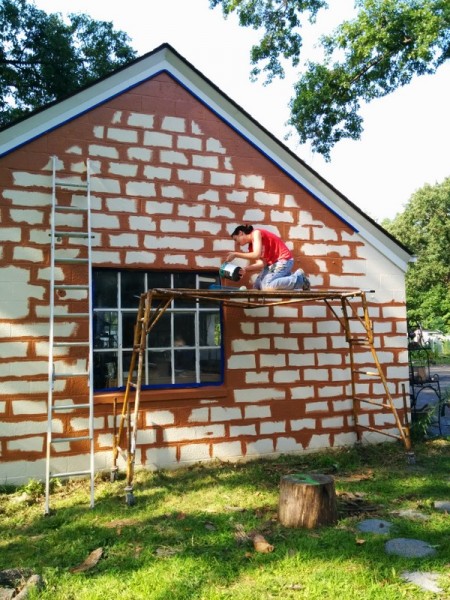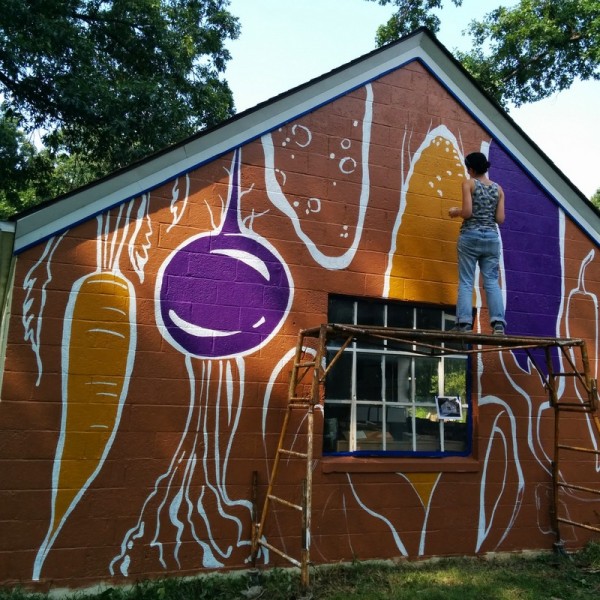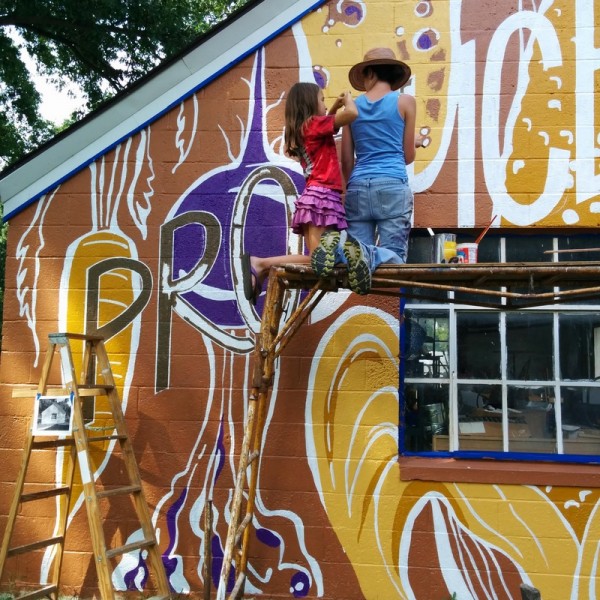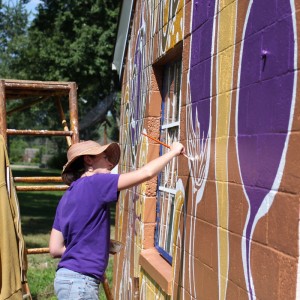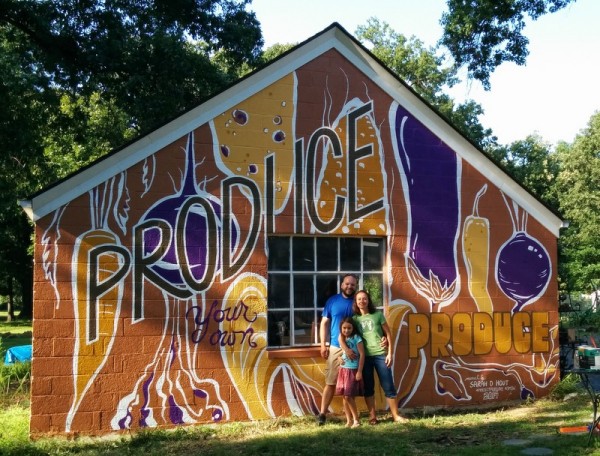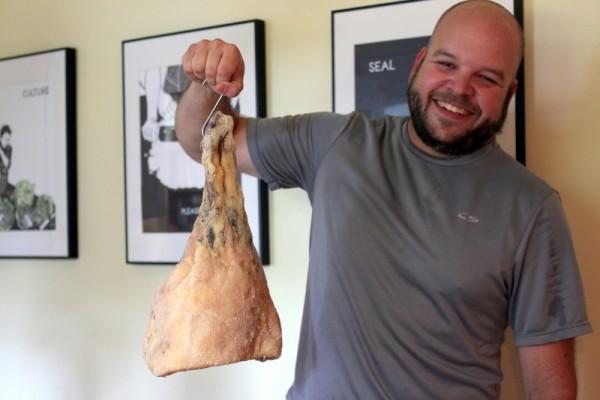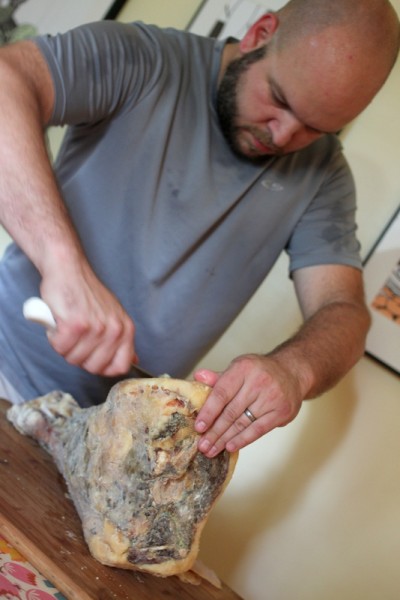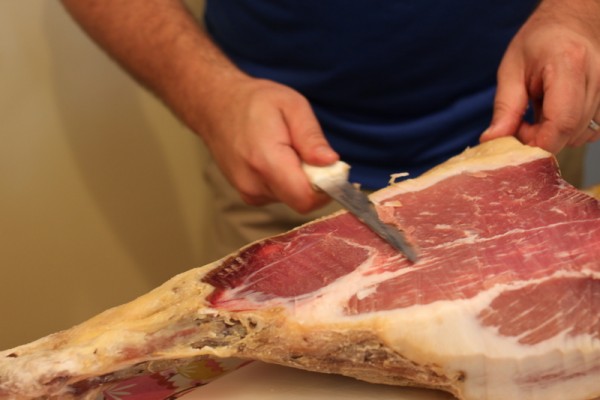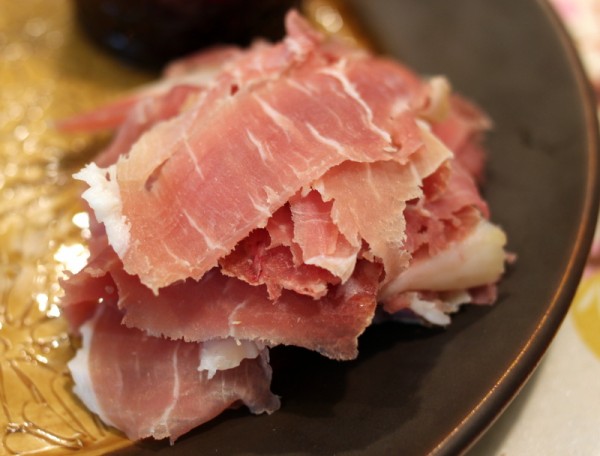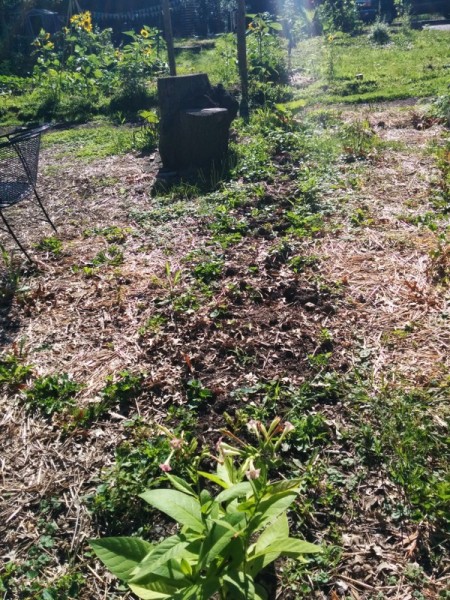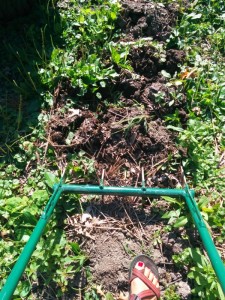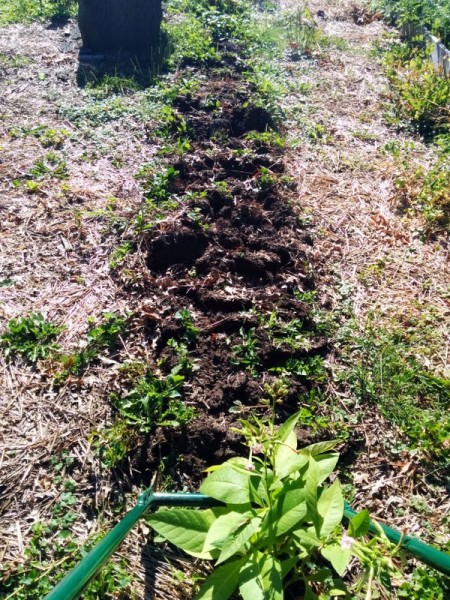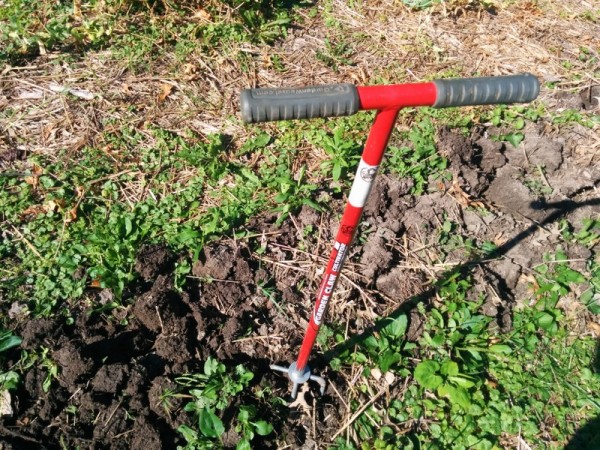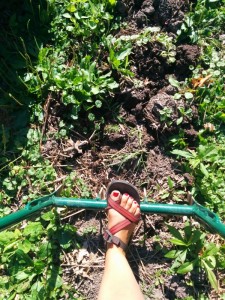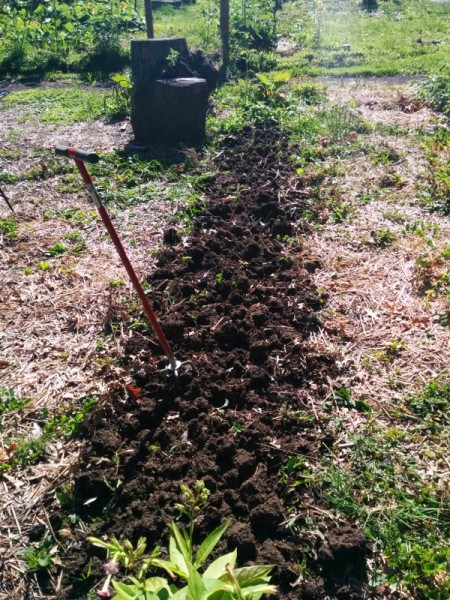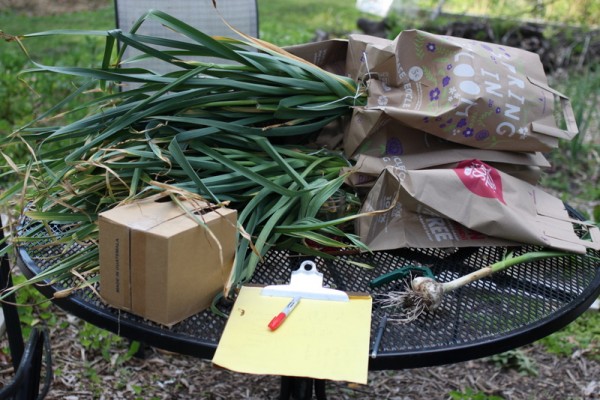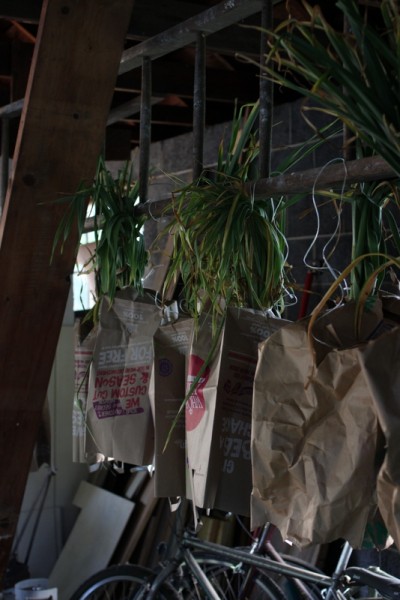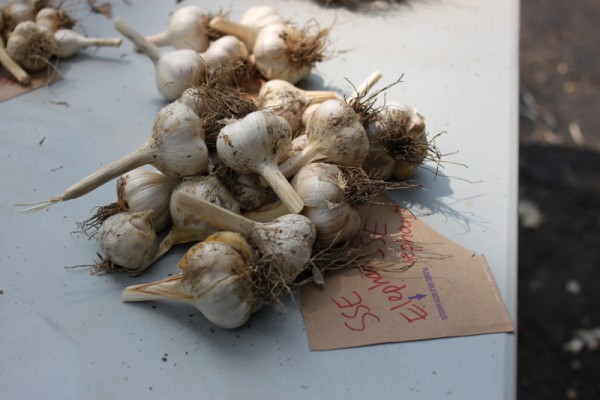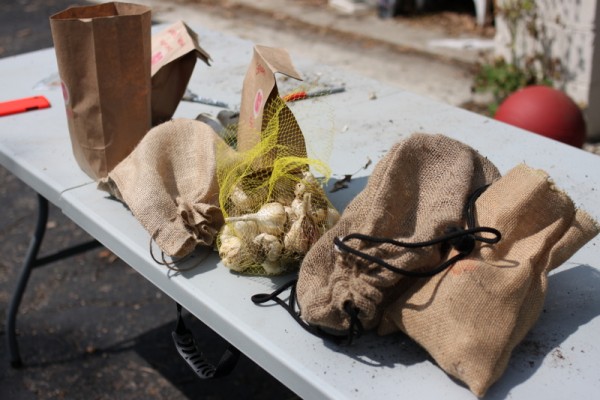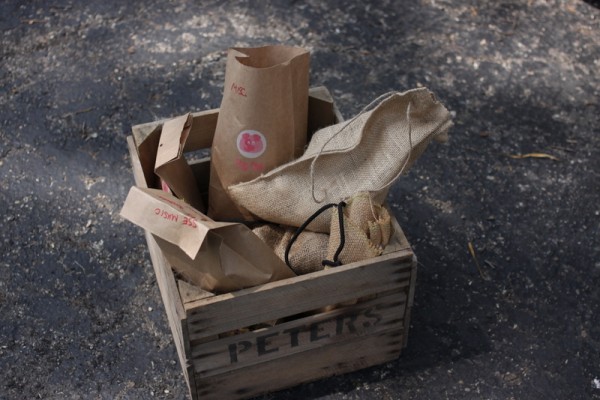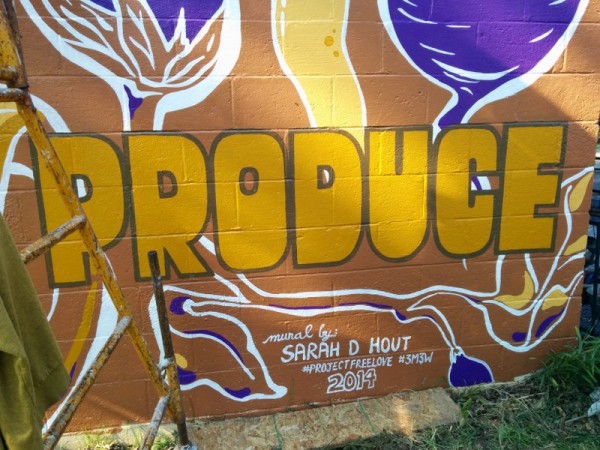 A few weeks ago, we were given the most amazing gift. Sarah Hout, a professional muralist, chose our garage for her Project Free Love, a three free murals endeavor. She came over for a short interview during which I showed her the gardens and told her how much I love the victory garden propaganda style and the color purple. She turned those tiny bits of information into something incredible.
A few weeks ago, we were given the most amazing gift. Sarah Hout, a professional muralist, chose our garage for her Project Free Love, a three free murals endeavor. She came over for a short interview during which I showed her the gardens and told her how much I love the victory garden propaganda style and the color purple. She turned those tiny bits of information into something incredible.
Mural Painting In Progress
Before we'd even seen Sarah's final design, we power washed the garage as she requested. Have you ever used a power washer? It was so fun that everyone in the family took their turn blasting the dirt off the garage wall.
Then Sarah started work. On the first day, she painted the background and we fed her homemade pizza with homegrown toppings. (Making meals for Sarah wasn't a specified part of the deal, but when you're here working on my property, I will do my best to make sure you aren't hungry.)
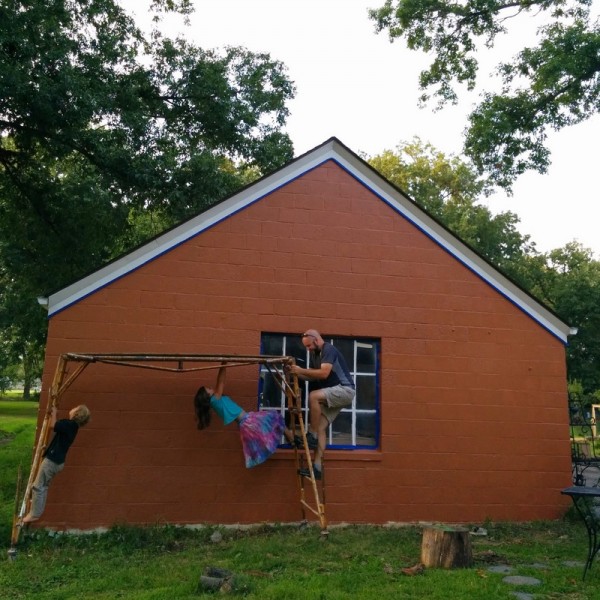
The next workday, two volunteers helped paint in Sarah's vegetable outlines. We found out that one of my favorite modern propaganda peeps, Joe Wirtheim of Victory Garden of Tomorrow, actually used to be Sarah's neighbor! His work definitely influenced the design of our mural. Lunch this day was homemade tortillas (recipe coming soon, we LOVE these) with curtido, beans, cheese, and fresh salsa.
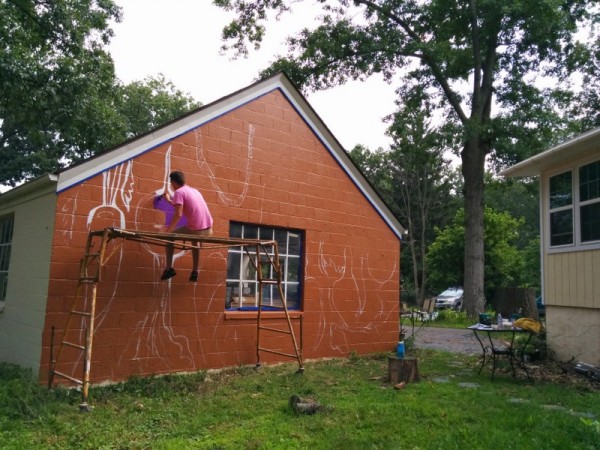
On the third workday, the brutal sun baked Sarah while she worked on details. Lil made a balm of aloe and toothache plant for sunburnt shoulders. I pitched in on the pepper and some potato details and made a quick stir fry for lunch.
On the fourth workday, Sarah finalized the outlines and details. We made sourdough biscuits, sour cherry chutney (recipe coming soon) and our first successful dry-cured ham for lunch. Sarah signed her work, and presented us with the mural. In the near future we'll have a time lapse video of the painting process to share.
Finished Garden Mural
We're completely amazed. This design couldn't better represent our family - we're working hard daily to produce our own produce and encourage everyone to do the same.
Check out Sarah's blog for a recap of how she felt about working with us. And stay tuned to our Facebook page for a time lapse video coming soon. We couldn't be happier with the mural or meeting this new friend who seamlessly understood our motives and appreciated our efforts. Thank you Sarah!!

